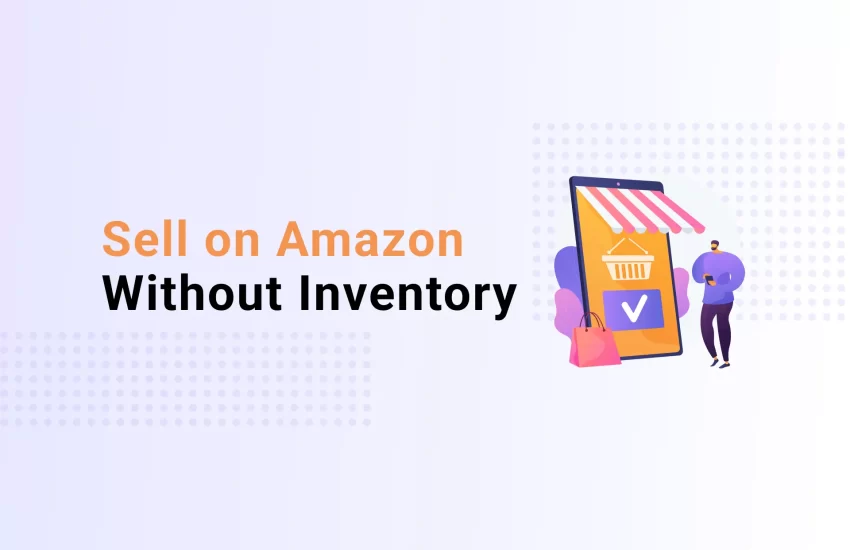In today’s digital age, e-commerce has become a booming industry, and Amazon stands at the forefront as one of the largest online marketplaces in the world. While the traditional way of selling on Amazon involves purchasing and managing inventory, there’s a growing trend among entrepreneurs and businesses: Sell on Amazon Without Inventory.
In this comprehensive guide, we’ll explore this intriguing concept, discussing the various methods, benefits, challenges, and essential strategies for success.
Chapter 1: Understanding the Basics
What Does It Mean to Sell on Amazon Without Inventory?
Selling on Amazon without inventory often referred to as “inventory-less” or “inventory-free” selling, entails using innovative strategies to list and sell products on the platform without actually owning or storing them. Instead of purchasing and stocking physical products, sellers rely on third-party suppliers and fulfillment methods to meet customer demands.
Here’s a breakdown of what it means to sell on Amazon without inventory:
- Listing and Marketing: Sellers create product listings on Amazon’s marketplace, showcasing the items they intend to sell. They provide product descriptions, images, and other relevant details to attract potential buyers. Marketing and promoting these listings are essential to drive traffic and sales.
- Order Fulfillment: When a customer places an order for a product listed by the seller, the seller does not physically ship the product from their own inventory. Instead, they relay the order information to a third-party supplier or fulfillment center.
- Supplier or Fulfillment Partner: In this business model, sellers typically partner with suppliers, manufacturers, dropshipping companies, or fulfillment centers that handle the storage, packaging, and shipping of products. These partners maintain their own inventory and take care of the logistics.
- Shipping and Delivery: The supplier or fulfillment center responsible for the product handles the packaging and shipping to the customer. They ensure that the product reaches the buyer in a timely manner and in good condition.
- Customer Service: While sellers don’t handle physical inventory or shipping, they are still responsible for providing excellent customer service. This includes addressing customer inquiries, handling returns, and resolving any issues that may arise.
Chapter 2: Methods to Sell on Amazon Without Inventory
- Dropshipping: Your Key to Amazon Success
Dropshipping is one of the most popular methods for selling on Amazon without inventory. In this model, sellers partner with suppliers who handle the inventory and shipping processes. When a customer places an order, the seller purchases the product from the supplier, who then ships it directly to the customer. This method offers numerous advantages, including lower upfront costs and reduced storage concerns.
- Print on Demand (POD): Customization Meets Convenience
For those interested in selling custom or personalized products, Print on Demand (POD) is an excellent choice. Sellers partner with POD providers who create and fulfill products like custom apparel, posters, and mugs. This method allows for unique product offerings without the need for inventory management.
- Affiliate Marketing: Earning Commissions with Amazon
Affiliate marketing is another way to sell on Amazon without holding inventory. In this model, you promote Amazon products on your website or blog and earn commissions for every sale generated through your affiliate links. While you won’t own the products, you can leverage Amazon’s vast catalog.
Chapter 3: Benefits of Selling on Amazon Without Inventory
- Low Initial Investment
One of the primary benefits of inventory-less selling is the minimal upfront investment. Traditional retail models often require substantial capital for purchasing and storing inventory. With methods like dropshipping and affiliate marketing, you can start with minimal funds.
- Reduced Risk
Since you don’t invest in inventory upfront, the risk associated with unsold or obsolete products is significantly reduced. This allows you to adapt quickly to changing market trends and customer preferences.
- Scalability
Inventoryless selling offers excellent scalability potential. As your sales grow, you can expand your product catalog without worrying about storage limitations. This flexibility can lead to substantial business growth.
Chapter 4: Challenges and Considerations While Selling on Amazon Without Inventory
- Supplier Reliability
In the world of dropshipping and POD, the reliability of your suppliers is paramount. Late shipments or low-quality products can harm your reputation on Amazon. Thoroughly vetting and maintaining strong relationships with your suppliers is crucial.
- Competition
As inventory-less selling becomes more popular, competition can be fierce. You’ll need to invest time and effort into niche research and marketing strategies to stand out from the crowd.
- Amazon’s Policies
Amazon has specific policies and guidelines for sellers, and staying compliant is essential. Keep a close eye on their service terms and ensure your business practices align with them.
Chapter 5: Strategies for Success and Selling on Amazon Without Inventory
- Keyword Research and Optimization
Effective keyword research and optimization are critical for visibility on Amazon. Use tools like Amazon’s own Keyword Tool to find relevant keywords and incorporate them into your product listings and descriptions.
- Quality Product Listings
Create compelling and detailed product listings. Highlight unique selling points, and benefits, and use high-quality images. An informative and engaging product listing can significantly boost conversion rates.
- Customer Service Excellence
Even though you’re not handling inventory, providing excellent customer service is vital. Respond promptly to customer inquiries and address any issues promptly. Positive reviews and ratings can drive more sales.
Conclusion
Selling on Amazon without inventory offers a unique and promising avenue for entrepreneurs and businesses to thrive in the e-commerce world. With the right methods, strategies, and a commitment to customer satisfaction, you can carve out a successful path in this dynamic marketplace. While challenges exist, the potential rewards in terms of low upfront costs, reduced risk, and scalability make it an option worth exploring.
If you’re ready to embark on this inventory-less journey, remember to stay informed about Amazon’s policies, maintain reliable supplier relationships, and continuously refine your marketing and customer service efforts. By doing so, you can position yourself for success in the world of Amazon sales without inventory.

